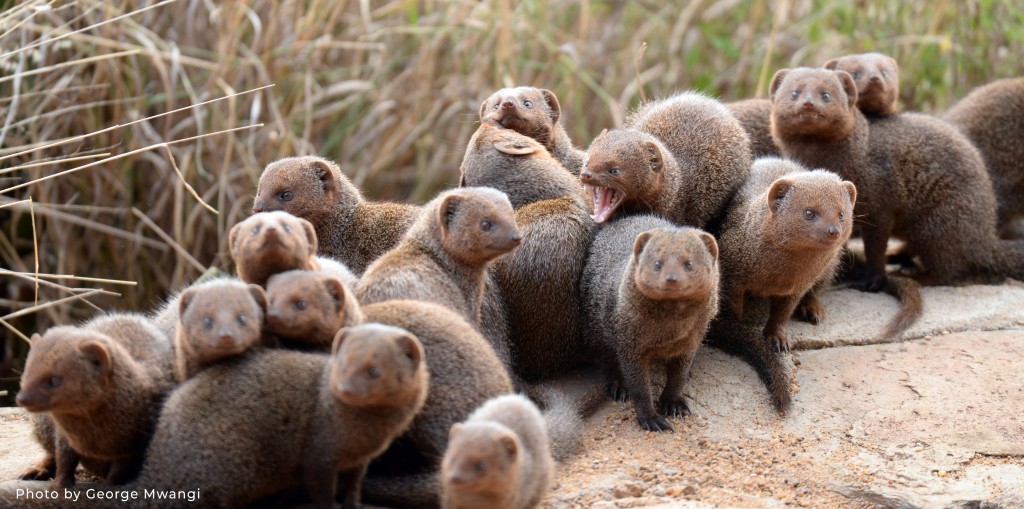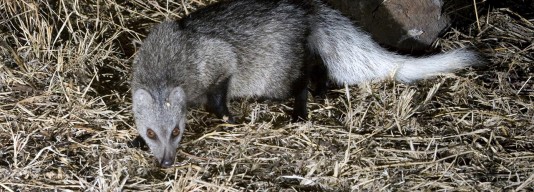As the Ewaso Ng’iro water levels recede amidst thinning grass and browning vegetation, viewers on Explore have witnessed special moments as small families of dwarf and slender mongoose emerge from their dens following the long rains. In what appears to be a boom in mongoose pups, the live cameras continue to capture more activity by the otherwise bold and vicious, mostly solitary small mammals. There are several mongoose species likely to be seen on the live cams at Explore, These predatory carnivores are noted for their audacious attacks on highly poisonous snakes such as cobras. Mongooses are short-legged animals with pointed noses, small ears, and long furry tails. The claws do not retract, and in most species, there are five toes on each foot.
For the slender mongoose, breeding occurs seasonally, with pups being born in the wet season. Gestation lasts 60 to 70 days, after which a litter of two to four pups is born. Females give birth in their dens and wean their pups when they are between seven and nine weeks old. Pups leave the den at the age of six months and are almost entirely grown after a year.
The slender mongoose is a silent and swift hunter, eating anything it can catch, including insects, lizards, snakes, other small mammals, and even birds (which they may hunt in trees). They also eat eggs, berries, and fruit making them versatile and well adapted to thrive in the savanna. Feeding habits vary from one mongoose to another with the white-tailed mongooses also killing snakes but more likely to eat insects.
White-tailed mongooses are common and fairly widespread, ranging across sub-Saharan Africa except in rainforest and desert or semi-desert regions.
These mongooses are extremely adaptable. Except for dry regions and equatorial rainforests, white-tailed mongooses can live almost anywhere, including savannas, grasslands, and woodlands, so long as food and denning sites are plentiful. They also survive well around farms, villages, gardens, and other human environments. They make high-pitched chittering sounds and loud barks when they’re scared or upset. Listen to them here and then see if you can recognise their calls on the live cams.
The white-tailed mongoose has also been seen using rocks as a tool to crack eggs. It throws the eggs at the rock through its back-legs.
Peace,
Victor@MpalaLive




